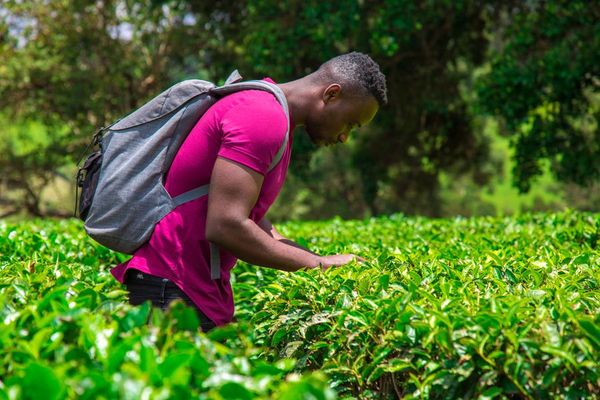The Odi Ogori Ba Uge Festival in southeast Nigeria is becoming a tourism pilgrimage for many, fimi Ovuru reports
The Odi Ogori Ba Uge Festival in southeast Nigeria is becoming a tourism pilgrimage for many, fimi Ovuru reports
ODI IS located in Bayelsa state in the Niger Delta region of Nigeria and is noted for its vibrant cultural ceremonies. The week-long annual Odi Ogori Ba Uge festival in July regularly records more than 100,000 thousand visitors a year from across the state, the country and abroad. It is by far the biggest festival celebrated by the Odi people of Kolokuma/Opokuma local government area of Bayelsa state. Every July 27, the community rolls out its drums for dancers; its boats for regattas; and its traditionally rich cuisines for an experience your taste buds will savour for evermore. Besides this, there are wrestling competitions and a number of pageants. The festival dates from 1957 as a celebration of the killing of a buffalo that had been terrorising the community for years. ‘Ogori Ba Uge’ means the Festival of the Killing of the Buffalo. Sadly, in more recent years, the town has become infamous for a debacle of a different kind: In 1999, under the orders of President Olusegun Obasanjo, federal troops were deployed to Odi to hunt down an armed gang that had been responsible for the death of a number of policemen. In the process, troops demolished every single building, barring the bank, the Anglican church and the health centre, killing hundreds of unarmed civilians at the same time. I happened to visit Odi for the first time after the invasion in 2002 and although the townspeople were attempting to gradually put the ugly incident behind them by resuming the festival, their lingering pain hung in the air. Flowever, by the end of the week-long celebration, a different mood was apparent as people from all walks of life, be they young and old, a tourist or an indigene, came together to enjoy African culture at its best. The first thing that struck me when I arrived at the lakeside, were the myriad of wonderfully decorated boats bobbing on the surface of the water that had once been clogged up with the dreaded water hyacinth. They were moored in preparation for the boat regattas and water sports that the festival is so well known for. In the days to come, the air would become charged with the sound of cannon fire and paddles hitting the waves in unison with the rhythm of the nearby drum and dance band. Delving back into history again, the story goes that in 1953 a wild buffalo started entering Odi from a nearby forest. It would attack by destroying crops and charging at villagers. Several villagers were killed. People became so afraid that they could no longer carry out the fishing and farming that were their main source of livelihood. Woo, the road from Odi to the ferry point, became a potential death trap and it appeared the beast only attacked Odi indigenes. Hunting expeditions were mounted by indigenous and foreign hunters, but without any luck. The search for help extended neighbouring countries and a mallam from Benin Republic, who was famed to be a powerful herbalist, was consulted in the belief that the buffalo was a human being that had transformed itself in order to cause havoc to the townsfolk. On arrival, he buried charms at strategic locations within the town. Although the people of Odi were still sceptical, on July 27, 1957, the buffalo was sighted grazing at a church compound, where it was immediately apprehended and killed. Villagers insist that the channs had managed to hypnotise the buffalo so that it behaved like a cow. This conquest ushered a new era as the town returned to peace and tranquility. In celebration, July 27 was set aside every year to commemorate the victory over the blood thirsty animal. Because the day falls around the season of fresh farm produce, the people of Odi also decided to use the period to celebrate the start of the harvesting season: holding fishing competitions, wrestling bouts and pageants, all wrapped round with music and dance.. Today, the festival has gone up a gear in order to showcase the tourism opportunities on offer. It opens with a dramatisation of its history, including, of course, the parading of a well masqueraded buffalo. Once declared open, exciting activities are rolled out one after another, as traditional and modern music compete for attention from all quarters. Food is also in abundance, with tasty native delicacies on offer like bushmeat and fresh fish peppersoup, barbecued or fried oysters (popularly known as watersnails), peppered snails and edible worms (caterpillars from rotten palm trees). As darkness falls, DJs, singers and comedians come into their own, getting everyone dancing and laughing the night away. The wrestling competitions are another of the festival’s highlights as champion wrestlers from neighbouring communities come to compete with one another. The winners become the champions of the clan, and these champions, popularly called olotus, command huge respect among the Ijaw people, this being the ethnic group that Odi is part of. Another highpoint is the boat regattas, which are noted for their colour and skilled manoeuvres. The boats are beautifully decorated and, amid music and dancing from members of the various groups, the paddlers compete to be crowned the fastest. Here you witness the living traditions of a community and how culture can strongly bond a people, together. Here you’re both entertained and at once captivated by a competition that keeps your adrenaline pumping till the winner reaches the end line. The harvesting and eating of the newly harvested crops is another not to be easily forgotten attraction. Here you see villagers not only celebrating their bountiful harvest, but giving others the opportunity to experience and savour their rich cultural delicacies, from their plantain pottage known as kekefia, nicknamed KKF, to their soups which are usually eaten with fufu (pounded cassava) or garri. Various forms of peppersoups are also available, from fish to various kinds of bushmeats, reflecting the fact that the main local occupations are fishing and fanning, with hunting thrown in as a supplement. Odi’s harvest of yams is dominated by water yams. As is the case of most Ijaws, villagers have the habit of having a side dish of either boiled plantains or yams whenever their table is set for a meal. With seafood in abundance, no traditional soup is prepared without it, with periwinkles and lobsters predominating. In terms of beverages, villagers enjoy a locally made gin popularly called kaikai, which of course is widely available at the festival. The Odi beach carnival is one of the major events of week, bringing together youths not just from the Odi community but the state and the rest of the nation. Popular DJs and music stars are brought in to entertain whilst friends, families and lovers gather on the sandy fresh water beach to have fun and unwind. The Odi Ogori Ba Uge festival also involves fashion pageantries, with both traditional and western themes, and many other funfilled activities. Newcomers to the event will certainly get a taste of what Bayelsa state has to offer – its 180km uninterrupted coastline teeming with sandy untainted beaches, its historical sites, dense mangroves, incredible lakes, rich cuisine and ever enchanting flora and fauna.


